DeepSeek's $3.46 Million Daily Earnings with 545% Profit Margin: Leading the Way in Closed Business Loop Innovation
![]() 03/04 2025
03/04 2025
![]() 444
444
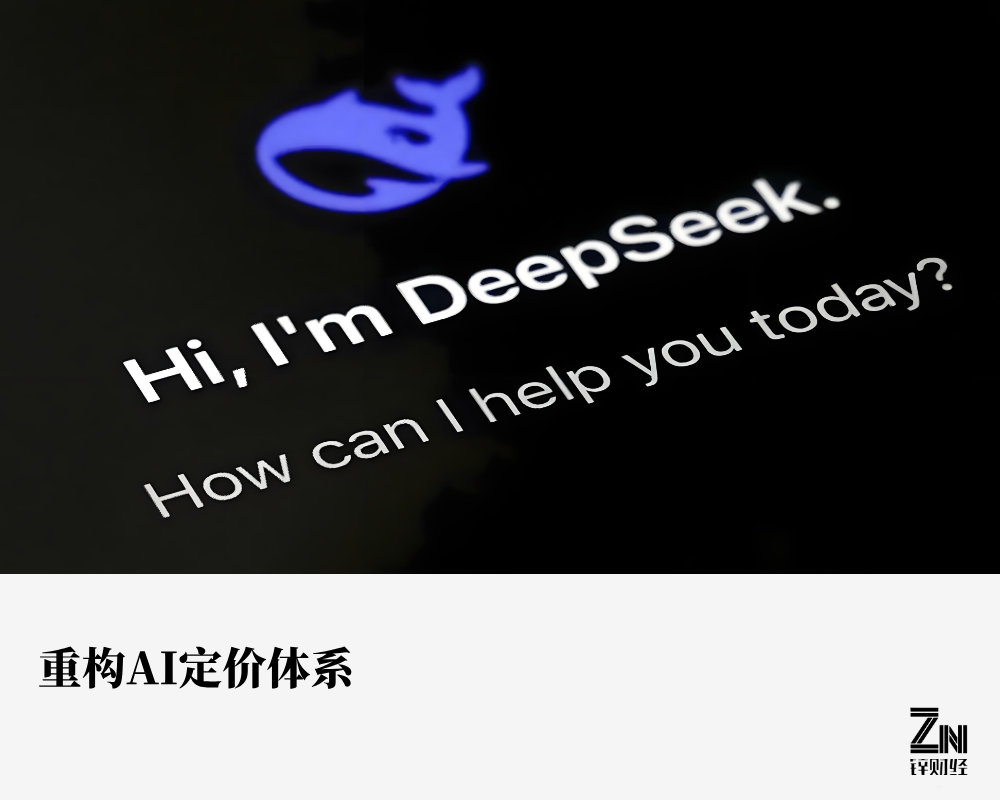
Author | Sun Pengyue
Editor | Da Feng
Who would have anticipated that DeepSeek, traditionally synonymous with "open source" and "free," would be the pioneer AI large model to forge a closed business loop?
The five-day "DeepSeek Open Source Week" concluded with a bang, leaving a lasting impression on Silicon Valley tech giants and showcasing China's technological prowess.
On the final day of Open Source Week, DeepSeek not only unveiled the technical secrets of its DeepSeek-V3/R1 inference system but also revealed its profit margin for the first time!
Based on publicly disclosed information, DeepSeek's theoretical daily revenue stands at $562,027, with a cost-profit ratio as high as 545%.
Undoubtedly, this "explosive" performance report will likely keep many Silicon Valley giants awake at night.

Earning Despite Price Reductions
DeepSeek's profit margin wasn't the result of meticulous calculations. They simply selected a random day, from 24:00 on February 27th to 24:00 on February 28th, and calculated its daily total cost at $87,072 (approximately RMB 630,000).
Had all tokens been charged at the DeepSeek-R1 price, the daily total revenue would have been $562,027 (approximately RMB 4.09 million), resulting in a cost-profit ratio of 545%. In other words, theoretically, DeepSeek earns a net profit of $474,955 (approximately RMB 3.46 million) daily.
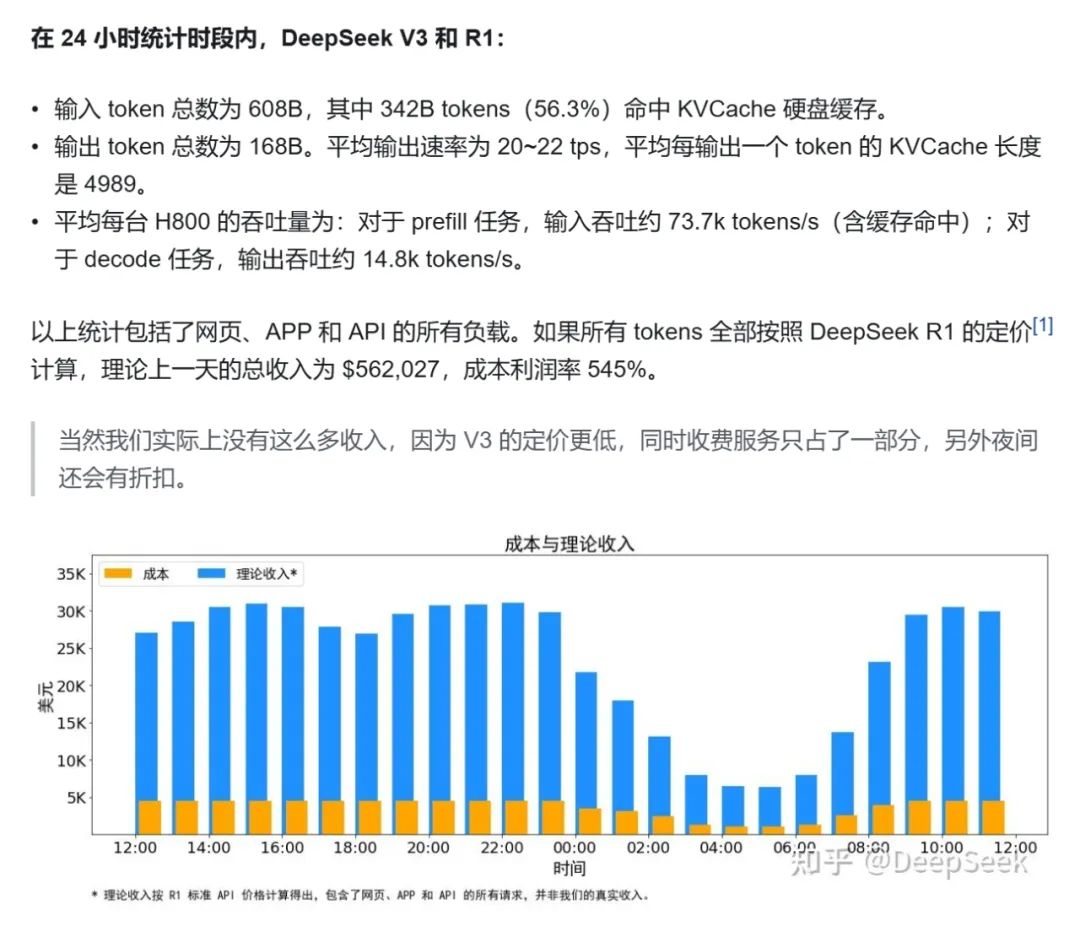
Source: DeepSeek Zhihu
Notably, the period from the 27th to the 28th wasn't DeepSeek's peak traffic day: its webpage and applications are free, with only some services generating revenue; there are also night discounts during non-peak hours.
Moreover, "the king of traffic" DeepSeek has always been enthusiastic about price reductions. Liang Wenfeng, the founder of DeepSeek, has publicly stated multiple times: "Both APIs and AI should be accessible and affordable to everyone."
Just last week, on February 26th, DeepSeek announced an off-peak discount event. From 00:30 to 08:30 Beijing time daily, API call prices were significantly reduced: DeepSeek-V3 was reduced to 50% of the original price, and DeepSeek-R1 to 25%.
This isn't the first time DeepSeek has reduced its prices.
According to online data statistics, DeepSeek has made several price reductions before. In August 2024, it announced further price reductions, adjusting its API input fee to 0.1 yuan per million tokens and the output fee to 2 yuan per million tokens; it also set a 45-day discounted price experience period in December 2024.
Of course, this primarily targets enterprise users, while ordinary users have always enjoyed DeepSeek for free.
So, how does DeepSeek make so much money?
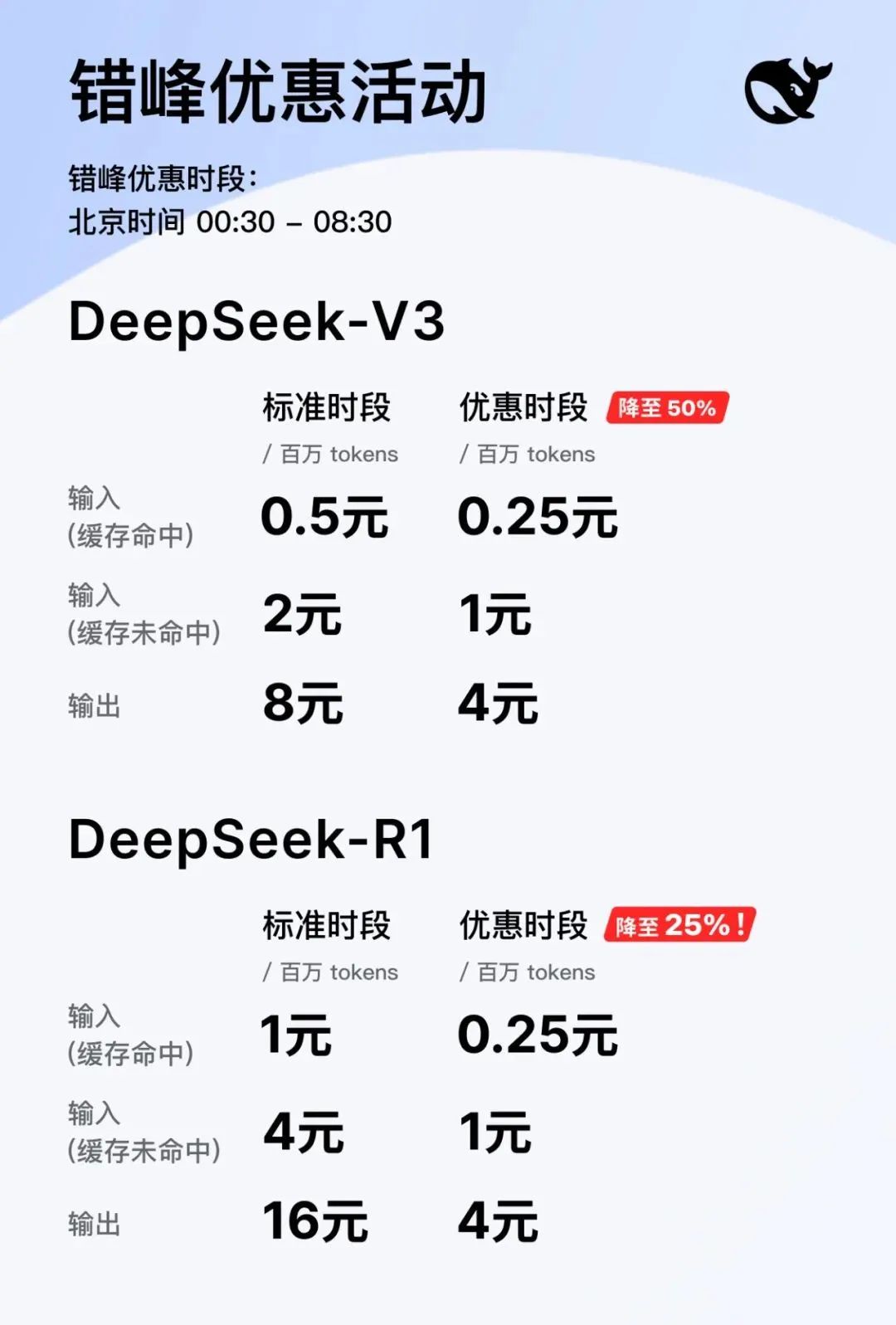
Source: DeepSeek Official Account
Currently, DeepSeek's primary revenue comes from B-end and a few G-end users through API call charges. By opening its large model's API interfaces, enterprises pay for usage based on the number of calls or a subscription model.
There are also a few clients with high data security requirements for whom DeepSeek provides localized deployment of large model solutions, charging for integrated software and hardware services.
According to public internet information, DeepSeek charges enterprises for customized solutions on a tiered basis based on the amount of data processed, with some top clients paying annual fees exceeding ten million yuan.
So why do top clients choose DeepSeek instead of OpenAI or other domestic AI providers? The reason is that DeepSeek is truly "too open-source"!
DeepSeek's open-source license is extremely lenient. According to public information, DeepSeek's open-source models can be used for commercial purposes, and DeepSeek does not claim any revenue from them. Even derivative models based on DeepSeek do not need to re-open source the secondarily developed models.
In other words, other internet companies can fully "kill two birds with one stone" by utilizing DeepSeek to create derivative products, which is permitted by DeepSeek.
This "thoroughly open-source" approach has won DeepSeek a large number of loyal users. It is also the fundamental reason why many companies such as Alibaba, Tencent, and Baidu actively integrate with DeepSeek.

A Touch of Technological Romanticism
Theoretically, after achieving phenomenal popularity, it would be a natural progression for DeepSeek to embark on commercialization. However, DeepSeek has gone against the grain by continuously reducing its prices, which puzzles many but is also the fundamental reason why DeepSeek has swept the global market.
As Liang Wenfeng once said in a public interview: "Many people may think there's an unknown business logic behind this, but in fact, it's primarily driven by curiosity."
This business logic, tinged with "technological romanticism," has led DeepSeek to abandon the high monthly fees charged by OpenAI. Instead, it chooses an open-source, low-cost, or even free strategy, significantly lowering the barriers to entry through reasoning-based AI technology.
Liang Wenfeng accurately predicted the truth behind AI pricing logic: although the concept is hot, all familiar interaction paradigms, monopolies, and giants have yet to emerge. Even the form of AI products has not been "finalized," and user habits are still a blank slate.
Therefore, the current stage is an explosion of technological innovation, not an explosion of applications.
A "money-uninterested" DeepSeek is much more formidable than a "high-priced monthly fee" OpenAI.
DeepSeek aims to turn the AI ecosystem into the "DeepSeek Ecosystem." It will be responsible for the basic models and cutting-edge innovations, while other companies build B-end and C-end businesses on top of DeepSeek.
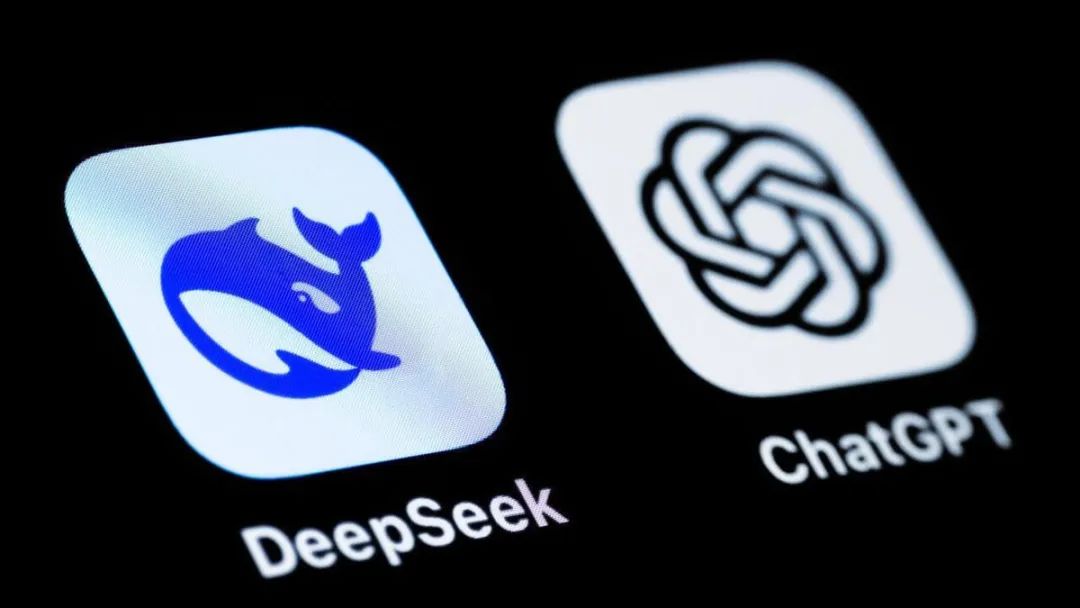
Source: Internet
It has to be said that DeepSeek is living out the dream of OpenAI.
As a non-profit enterprise, OpenAI has always been advocating: "We hope to advance the development of digital intelligence in the way that is most likely to benefit all humanity, without being constrained by the need to generate financial returns."
It's easy to say but hard to do.
OpenAI's open-source strategy only lasted until before the release of GPT-3. After the release of GPT-4, it has hidden its training data and model weights, gradually moving towards closure. Even on February 28th last week, OpenAI released a preview version of the GPT-4.5 large model, but it is only available to Pro subscribers who pay $200 per month.
In addition to charging for C-end users, B-end users are charged even more. The API pricing for GPT-4.5 is $75 per million tokens, a 30-fold increase from GPT-4's $2.50.
Calculated based on DeepSeek's latest API off-season discount price, GPT-4.5's input price (cache hit) is over 1000 times higher.

Reconstructing AI Industry Rules
Apple CEO Tim Cook has publicly praised DeepSeek's business model: "DeepSeek has redefined the economics of innovation, proving that efficiency improvement itself is the sexiest business model."
As a "master of supply chains," Cook is acutely aware of the impact of the "efficiency revolution" on an industry chain. Especially when DeepSeek also possesses the most advanced deep-thinking capabilities in the field of AI.
The "sexiest business model" in Cook's words is actually DeepSeek's utilization of geographic arbitrage and the price difference in computing power between China and the United States to build a hybrid architecture for optimal cost; it achieves anti-Moore's Law by doubling the commercial value of the same computing power every six months through algorithmic optimization.
While Silicon Valley is still debating AGI ethics, DeepSeek is sweeping the world with an efficiency revolution and ecosystem binding, rendering OpenAI and NVIDIA's "AI monopoly" obsolete.
Whether in a literal or practical sense, DeepSeek has truly achieved technological equity by reducing the cost of large model inference to one-fiftieth of the industry average, forcing a reconstruction of the global AI pricing system.
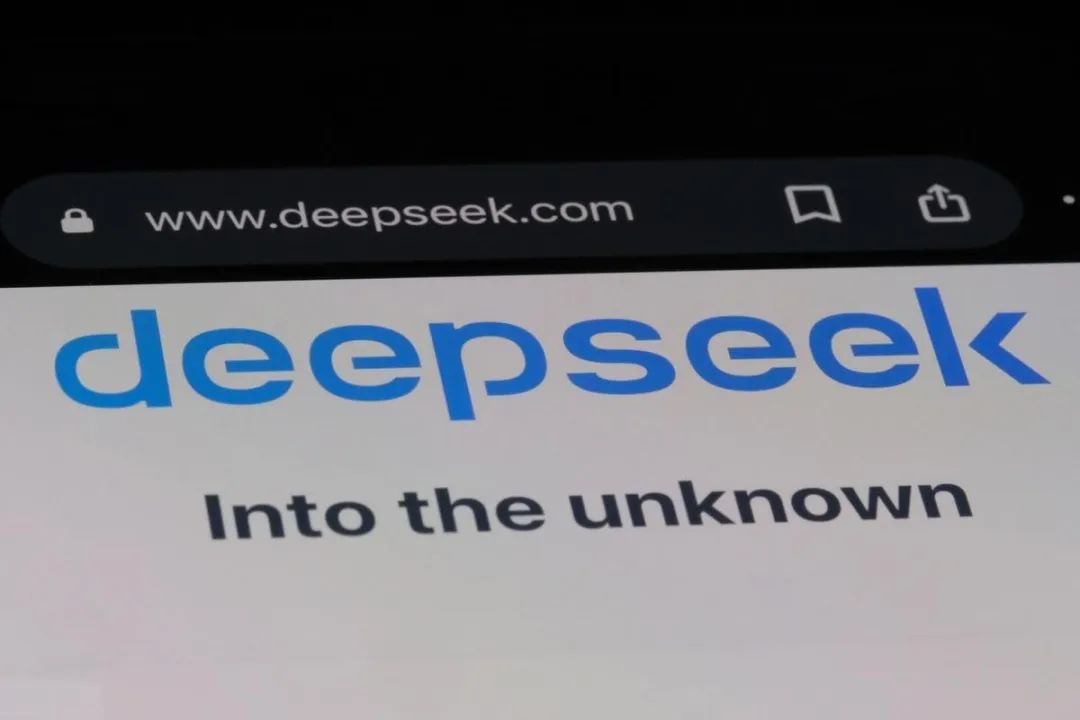
Source: Internet
In the long history of human civilization, technological innovation has always been a powerful force driving social progress. From the roar of steam engines to the popularity of the internet and into the era of artificial intelligence, each leap has redefined the operating rules of the social economy.
DeepSeek's disruption lies in its use of technological democratization to dismantle the traditional AI business model of high investment, high barriers, and high margins, forcing the industry to accept a more decentralized value distribution system that relies more on ecological collaboration.
All major internet companies are now pondering the same question:
How to enable users to use AI for free.








